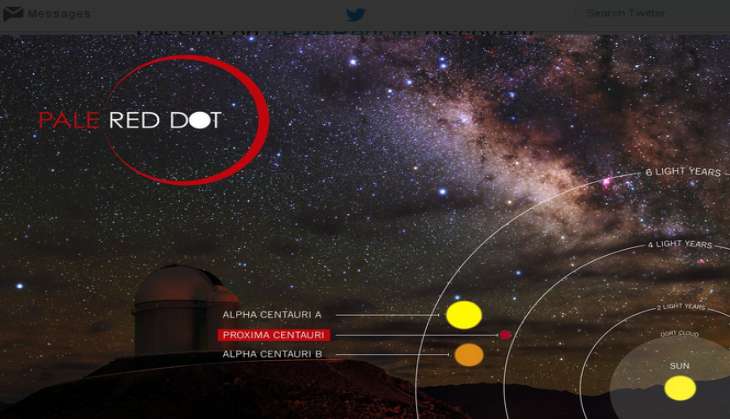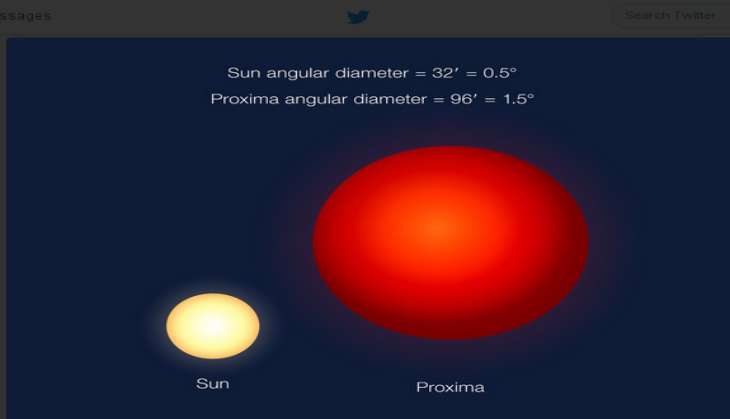
Space enthusiasts and humankind, in general, are falling over themselves to share the news of the discovery of Proxima b, a potentially Earth-like planet.
The discovery was made by the Pale Red Dot campaign, under which astronomers led by Guillem Anglada-Escudé, from Queen Mary University of London, monitored the skies for signs of the wobble of a star - which is caused by the gravitational pull of an orbiting planet.
After confirming this with observatories around the world, and the findings of the European Southern Observatory (ESO), scientists concluded that they had indeed found a planet.
Only, everyone seems to be overlooking the fact that we have no confirmation of whether the Proxima b is indeed habitable.
While it will take years to confirm this, here is what we know about Proxima b so far:
- Proxima b orbits the red dwarf star, Proxima Centauri, and is 4.2 light years, or 40 trillion kilometers away from Earth.

- The Proxima Centauri is smaller and cooler than the Sun we know and love. It is a lot older too. It lies near the Alpha Centauri AB pair of stars. Proxima Centauri has been given the name Pale Red Dot, a hat-tip to Carl Sagan, as it is a red dwarf planet. This means that Proxima b is bathed in a pale red glow.
- Proxima b takes 11 days and a few hours (11.2 days) to orbit its star. Scientists have found that it wobbles toward and away from the earth - a finding attributed to the Doppler effect.
- The Earth is at a distance of 93 million miles from the Sun. The distance between Proxima Centauri and Proxima b is about 1/20th that. This puts it in the so-called Habitable (Goldilocks) Zone, as this paper - by researchers from Spain, Belgium, France, Germany, and UK - confirms.

- It is 1.3 times the size of our own planet. It is suspected to be habitable because it is just at the right distance from its star to sustain liquid water. However, the planet also "receives 10 to 100 times more X-ray and ultraviolet radiation than Earth does," Richard Nelson, a professor of astronomy from Queen Mary's who worked on the study, told BuzzFeed News.
- It is a tidally-locked planet. In simpler terms, this means that it is so close to its star that one side of the planet is always in darkness.
- The ESO has cited this paper, which states that liquid water may only be present in the sunniest regions of the planet.
Watch a fly-through of the Proxima Centauri system here:
Wait, so is it habitable or not?
This paper, which allows a closer look at Proxima b, accessible here reads as follows:
"Calculations reveal that Proxima b could have lost about 1 ocean's worth of water due to the early irradiation in the first 100-200 million years after formation. What happened after that time is very uncertain".
"The planet could have continued to lose significant amounts of atmosphere gases and end up as a dry, atmosphereless world. Or perhaps it could have been able to keep most of its atmosphere and preserve liquid water on the surface and therefore be hospitable to life as we know it. Both possibilities are still open."
Watch an artist's impression of Proxima b here:
Here are the projects working to find out more about Proxima b
It may take anything from 4 to 20 years to confirm if the planet is habitable. Here is how scientists plan to confirm if it is habitable:
The Breakthrough Starshot project
The $100 million project, helmed by legendary cosmologist Stephen Hawking and Russian billionaire Yuri Milner, aims to build a prototype for a light spacecraft with light beams and sails - christened the Nanocraft - that could visit Alpha Centauri in about 20 years.
Here is a list of the telescopes that will be watching the planet very closely:
1) The Spitzer space telescope
2) The James Webb telescope
3) The 39-m ESO E-ELT telescope European Extremely Large Telescope
Your guide to joining the hunt
Want more information about the discovery? Here is a list of resources for you to bookmark:
- Read the ESO press release on Proxima b here.
- Want to know how Pale Red Dot observed it all? Read their blog here.
Read the detailed report in the journal, Nature, here.
Have questions? Ask the scientists themselves on this incredibly informative Reddit AMA.
First published: 25 August 2016, 2:45 IST







![BJP's Kapil Mishra recreates Shankar Mahadevan’s ‘Breathless’ song to highlight Delhi pollution [WATCH] BJP's Kapil Mishra recreates Shankar Mahadevan’s ‘Breathless’ song to highlight Delhi pollution [WATCH]](https://images.catchnews.com/upload/2022/11/03/kapil-mishra_240884_300x172.png)

![Anupam Kher shares pictures of his toned body on 67th birthday [MUST SEE] Anupam Kher shares pictures of his toned body on 67th birthday [MUST SEE]](https://images.catchnews.com/upload/2022/03/07/Anupam_kher_231145_300x172.jpg)






